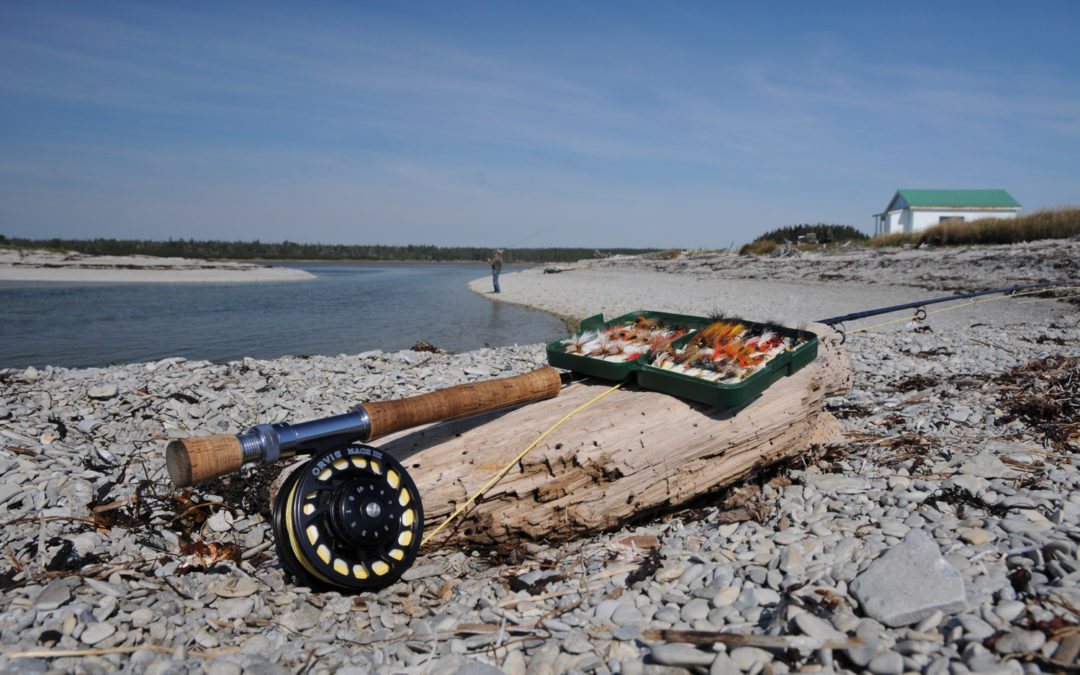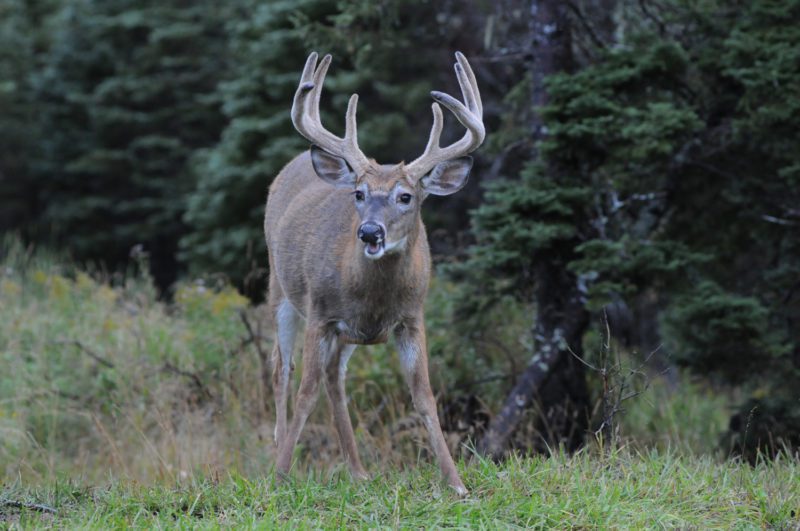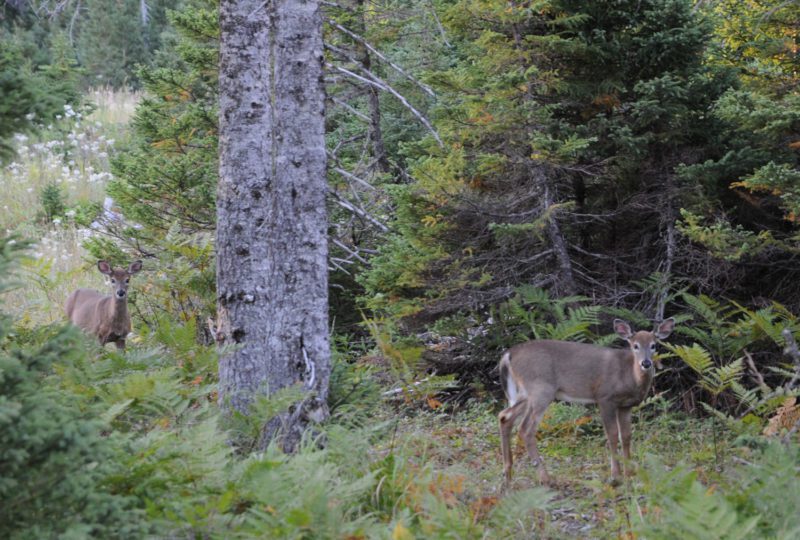Anticosti Anticipation
October 21, 2020



 Fishing,Hunting,SCA Articles
Fishing,Hunting,SCA Articles

After an absence of nearly 20 years, I returned to Anticosti, that 135-mile long and 30-mile wide spruce-covered, tear-shaped island sitting at the head of the Gulf of St. Lawrence.
L’Île-D’Anticosti has many moods. When fog settles in from the Atlantic, it frowns. Yet on each spruce needle it leaves a diamond. As morning sun melts the mist, each droplet sparkles with increasing joi de vivre. You can see it in the deer. With such hesitancy they tread when their world is grey, so tenuous and delicate. But in the sun, they step with haute confidence that only true Québécois can muster.
After an absence of nearly 20 years, I returned to Anticosti, that 135-mile long and 30-mile wide spruce-covered, tear-shaped island sitting at the head of the Gulf of St. Lawrence. Why the second week in September instead of, say, say the same week in November? I wanted to fish for Atlantic salmon and to hunt whitetails, and verify what I’ve written about the outfitter, Safari Anticosti, in Sporting Classics’ book Classic Sporting Lodges.
To be frank, this is not the best time to do either, but it is the best time to do both. Had my budget been flush, I’d have booked a week of salmon fishing in July and come back for the rut in November.
Unless a hurricane sweeps up the East coast, August opens the island’s dry season. This summer has been unusually so: two months with only enough rain to keep road dust down. Anticosti’s five salmon rivers – Jupiter, Saumon, Ferrée, á la Loutre, and Chaloupe are running two feet lower than usual. In most places they can be waded in boots no higher than your calf.
Salmon, their backs tawny olive against amber river stone, fin gently waiting for the next spate of fresh water, no matter how sparse, to woo them upstream. Better fishing is found at the rivers’ mouths where narrow channels, some no wider than a double haul and not much longer than a football field, cut through terminal barrier bars into the ocean. Fish the falling tide; at its fullest ebb lasting but two hours is best.
Conventional wisdom holds that anglers use traditional salmon wet flies: Jack Scott, Blue Charm, Black Bear Green Butt, and their ilk fished with floating lines because sinking lines are verboten. Yet the channel is shallow and I prefer dries. On my eight-weight I bent on a # 6 grey bomber with bushy white hair wings. Heavily dressed with Gink, it rode the current proudly until I pulled it under as it began to swing on the retrieve.
Not ten feet upstream of my cast, a 30-inch salmon leaped free of the water. Downstream the back of another broke the surface. Just beyond my spot on the bar, swam a third. I cast upstream, threw a mend, and shook out extra line for as long a dry drift as the current allowed. My first, a 24-inch grilse, nailed the floating fly, and my second, a similar juvenile returning from its first season in salt, took it on the swing. I could have kept this up until the ebb tide was exhausted, but alas our party was due back at Chaloupe lodge for lunch.
Afterwards, we donned camo, traded fly rods for rifles, and set out for whitetails. Each morning at 5:30 my guide, Raymond Parent would collect me for the morning hunt. To manage the population, guests are allowed to harvest two deer of either sex in late summer.
My goal was a buck in velvet of eight points or better. Raymond told me that it was possible, but the odds were very, very long. Temperatures nudged the 70s. Mainly forested with spruce, frost had yet to fell the undergrowth of ferns. Suffice it to say, cover was thick. Still bald-like meadows roll over low hills. To them Safari Anticosti’s guides had marked easy to follow trails with orange engineering ribbon through the woods. They offered many opportunities to peer into grassy swales and to watch tree lines.
Some paths led to blinds wrapped in thick black felt where one could sit scanning a meadow or stream crossing. A few of the blinds were close to gravel roads and overlooked automatic feeders. Others, not much more than a half-hour’s walk from the road, were placed at the head of openings holding a salt bock.
Hunters can hunt the way they like. If you want to pack a lunch and still hunt from dawn ‘til dark, your guide will recommend a trail, give you the map, drop you off, and arrange a time and place to pick you up. If, as I did, you want to sample all that Anticosti offers, you can begin the morning sitting in a blind, break for lunch, still hunt ‘til mid-afternoon, and then enjoy day’s end on another stand.
Though a pair of hefty 8-pointers came to the lodge for their breakfast every morning, Raymond tried very hard to convince me that my chances of taking a big buck in velvet were pretty slim. He should know. He’s been guiding on Anticosti since 1972 and probably understands the island and how its weather affect the deer better than almost anyone else.
On my last night, I almost succumbed to his urgings to take a doe. I was assigned a blind overlooking a feeder. After loading my rifle and setting up my cameras, I leaned back and rested my eyes. Not more than a handful of minutes passed before I opened them and saw a heavy doe to the left of the feeder about 50 yards away. I watched her until she ambled off. Two more does arrived. They grazed under the feeder and then followed the path toward the blind.
They saw me raise my Nikon, heard its shutter, paused, and peered at me. They eased around the blind, stopped, and looked in its open door. I kept shooting pictures. Tiring of the game, they returned to the feeder. About ten minutes later a much bigger doe and a younger one came to feed. They were joined by two more. Then the big doe snorted loudly. All the other deer fled except the young doe that accompanied her.
I watched them and thought “What an easy shot.” But every few minutes they’d raise their heads, perk their ears, and look off to the left. Did they sense a buck? I waited tensely, rifle ready. The old doe snorted again and with her companion bound into the spruce. “Ah ha. He’s coming!” I froze, daring only to breathe, and sat like that until dark.


